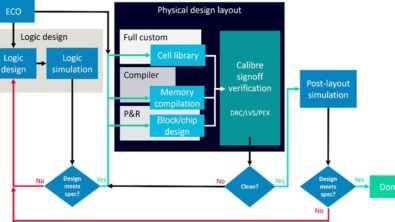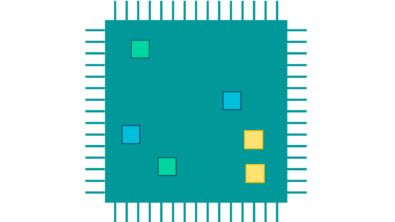Speeding up early design rule checking with Calibre nmDRC Recon
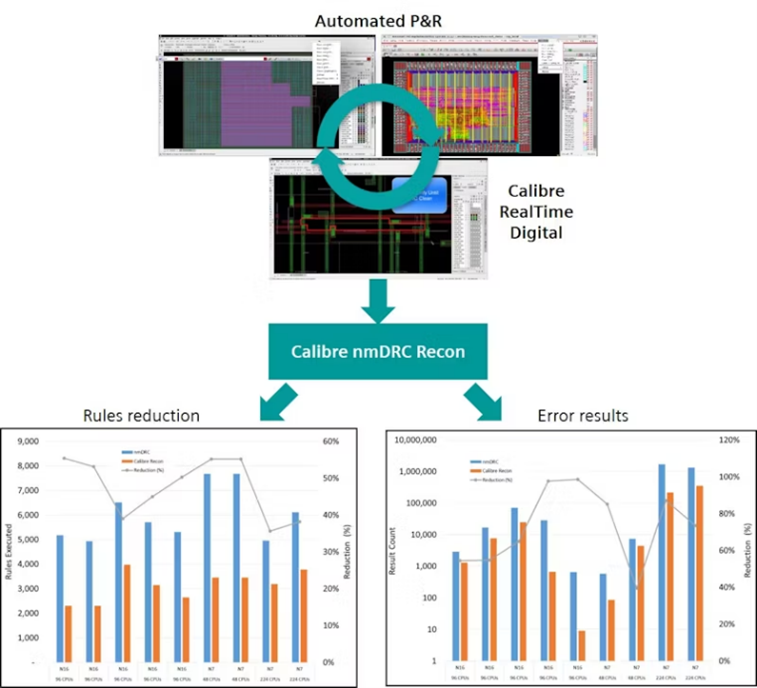
By John Ferguson and Nermeen Hossam
Chip designers are very aware of how time-consuming early design rule checking (DRC) can be. Not only that, but traditional DRC runs during initial design phases can flood you with errors that may be irrelevant at this early stage. Sorting through these is a massive drain on time that you don’t always have. So let’s talk about Calibre® nmDRC™ Recon, a tool that makes early design rule exploration faster and more efficient.
What is Calibre nmDRC Recon?
Calibre nmDRC Recon check selection is like a specialized filter for your design checks. Unlike the traditional signoff DRC runs, which check every single rule, Calibre nmDRC Recon only runs a selective set of rules. This means it skips over checks that don’t matter in the early stages, focusing only on what’s crucial. Calibre Recon Gray Box allows designers to exclude or “gray box” unfinished parts of the design, only checking their interface regions. This targeted approach dramatically reduces the time and resources needed for early-stage verification.
Why use Calibre nmDRC Recon?
Calibre nmDRC Recon offers several advantages that make it an essential tool for early design rule checking. It runs a selective version of the signoff rule deck, ensuring that only relevant checks are performed, which streamlines the process. Designers can exclude incomplete blocks and focus on interface regions to catch violations early. This targeted approach reduces the number of verification iterations needed, saving both time and resources. Additionally, significant reductions in memory consumption and runtime make the verification process more efficient. To see how effective Calibre nmDRC Recon is, let’s compare it to traditional DRC runs. Figure 1 illustrates the difference in the number of checks executed and violations reported between a full signoff DRC run and a Calibre nmDRC Recon run.
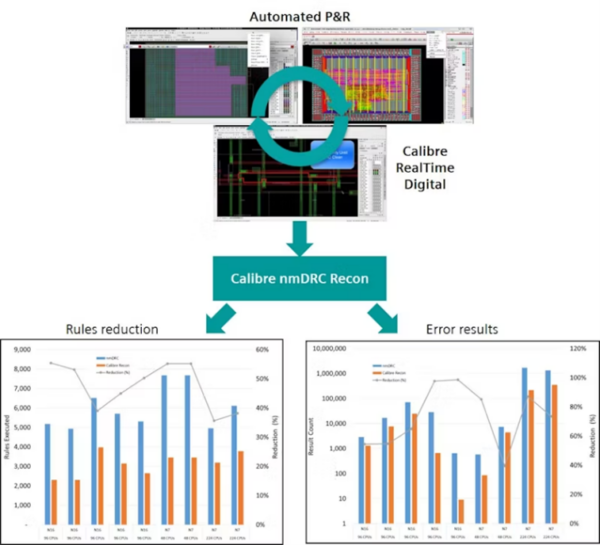
Benefits of using Calibre nmDRC Recon
Adopting Calibre nmDRC Recon in your design workflow comes with a host of benefits that streamline the verification process and boost overall productivity. Here are some of the key advantages:
- Faster runtime: Save time with quicker verification runs.
- Lower memory usage: Use less memory, allowing for more iterations in less time.
- Smaller DRC results database: Easier to debug and manage the results.
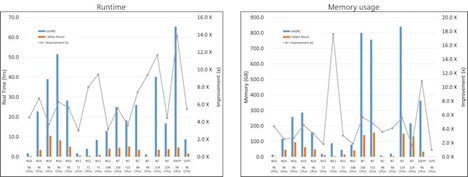
Targeted checks: focus on what matters
Calibre nmDRC Recon allows for targeted checking by automatically selecting relevant checks for early design phases. This results in faster debugging and fewer meaningless errors. For example, context-dependent rules that usually slow down the process are skipped until later stages when they become relevant.
The tool supports pre-defined check categories like density checks and connectivity checks. Designers can run pre-defined check groups as is, unselect specific checks within a category, or manually control the types of rules selected. This flexibility ensures that only the necessary checks are run, further speeding up the verification process.
Gray Box: Excluding unfinished blocks
One of the standout features of Calibre nmDRC Recon is the gray box capability. This allows designers to exclude incomplete blocks from the DRC run while still checking their interface regions. This way, you can focus on the critical parts without being bogged down by incomplete sections.
Benefits of gray box
- Reduced runtime: By excluding unfinished blocks, you save even more time.
- Focused debugging: SoC designers can concentrate on integration violations without distractions.
- Waiver halo: Interface violations can be accurately captured by maintaining a specified halo around excluded blocks to waive the introduced false violations.

Three gray box flows supported by Calibre nmDRC
- Excluded cells with preserved layers
- Included cells only
- Interface-only
Each option offers a unique way to handle unfinished blocks, providing maximum flexibility.
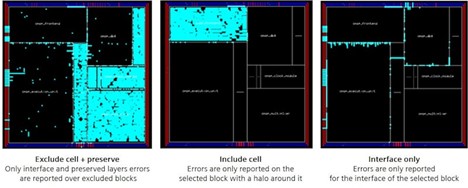
Advanced debugging with Calibre Auto-Waivers
Calibre Auto-Waivers enhances the debugging process by automatically waiving false violations. This is especially useful for complex rules like antenna checks and curvilinear structures.
- Antenna debugging
- Advanced nodes have made antenna violation debugging more challenging. Calibre Auto-Waivers reports detailed properties to help designers quickly identify and fix antenna violations.
- Curvilinear check waiving
- Placing curvilinear structures on a rectangular grid can lead to false violations. Calibre Auto-Waivers filters out these false positives, ensuring only real errors are reported.
Key takeaways and additional reading:
- Speed up early design rule checks
- Reduce memory and runtime requirements
- Focus on relevant checks
- Exclude incomplete blocks for more efficient debugging
- You can read more on this topic in our recent technical paper Speed up early design rule exploration & physical verification
Conclusion: Enhancing productivity and design quality
Calibre nmDRC Recon, combined with Auto-Waivers, significantly enhances early design rule checking. By focusing on relevant checks and excluding incomplete design sections, designers can save time, reduce errors, and improve overall design quality. These tools streamline the verification process, allowing for faster and more efficient tapeouts without compromising on quality.
